Zoltán Kiss- Area Sales Manager - East Europe - Endrich GmbH.
Constant current LED drivers
7 February 2014

Summary :
Most of the electrical engineers are familiar with the constant voltage drivers, these are the most accepted and preferred power sources for the general electronics. No matter what load condition is applied, the voltage of the input will remain stabile and regulated. When driving LED based lighting applications, we need however a different driving method, due to the special physical requirement of the LED technology. This article will show examples of constant current drivers, describes the properties and lists the parameters that have to be taken in account when selecting such a power source.
Drivingmethods and LED properties
LED brightness, described by the luminous intensity (Iv), is a function of the forward current that flows through the LED device. If the design requires a constant, steady brightness, the power source of the LED should provide constant forward current to the LED device. There is an exponential relation between the forward voltage applied to the LED and the forward current resulted by this voltage. A relative small change of the voltage can enlarge the forward current very much, therefore the LED is forced to be emit light brighter, but could also be overdriven.
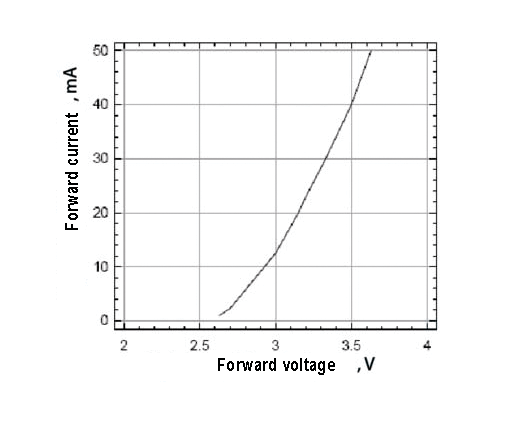
The huge deviation of the forward current will result excess heat that may significantly reduce the LED’s lifespan. In cost saving and not critical designs, when the current is low and the voltage source is quite stable, engineers usually use a simple current limiting resistor to avoid this runaway. It is also possible to control brightness with this serial resistors in parallel LED strings, when the brightness selection of the applied LEDs makes it necessary to fine tune the forward current, in order to achieve equal brightness for all the LEDs in the cluster. Based on operation principle, there are linear regulators and switching mode drivers. With the first solution we can have a simple circuit, however the efficiency is low because of the power dissipation. The linear driver acts like a current controlled resistor, when the current changes, the internal resistance is adjusted in order to keep the set current. More usual today is to have switching mode drivers, that are characterized by more complex circuits, and low power dissipation, better efficiency. The switching regulation function is based on transfer of energy packages, that are time to time stored in an inductor and passed to the load. In order to provide steady forward current independent from the possible fluctuation of the input voltage, it is preferred to use constant current LED drivers. With this solution better brightness consistency and longer lifetime can be achieved, when using LEDs in lighting applications.
Driving in practice
When using single LEDs, there is a possible solution to control the LED current with a discrete electronic component. A CRD (Current Regulative Diode) is a diode which supplies constant current to an electric circuit, even when power supply voltage fluctuations or load impedance fluctuations occurred.
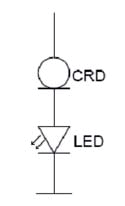
Therefore the CRD is used for current stabilization and current limiting, and perfectly suitable for low current requirements, like a small LED till 1 8mA. Of course in general lighting applications the engineers do not often use single LEDs in order to produce the expected light engine, but use LED strip designs or LED modules offered by a number of suppliers. In these cases it is better to use finished constant current LED drivers, that match the requirements of the most used COBLED modules available in the market. These devices are built ready to connect the input to the mains and the output directly to the LED module.
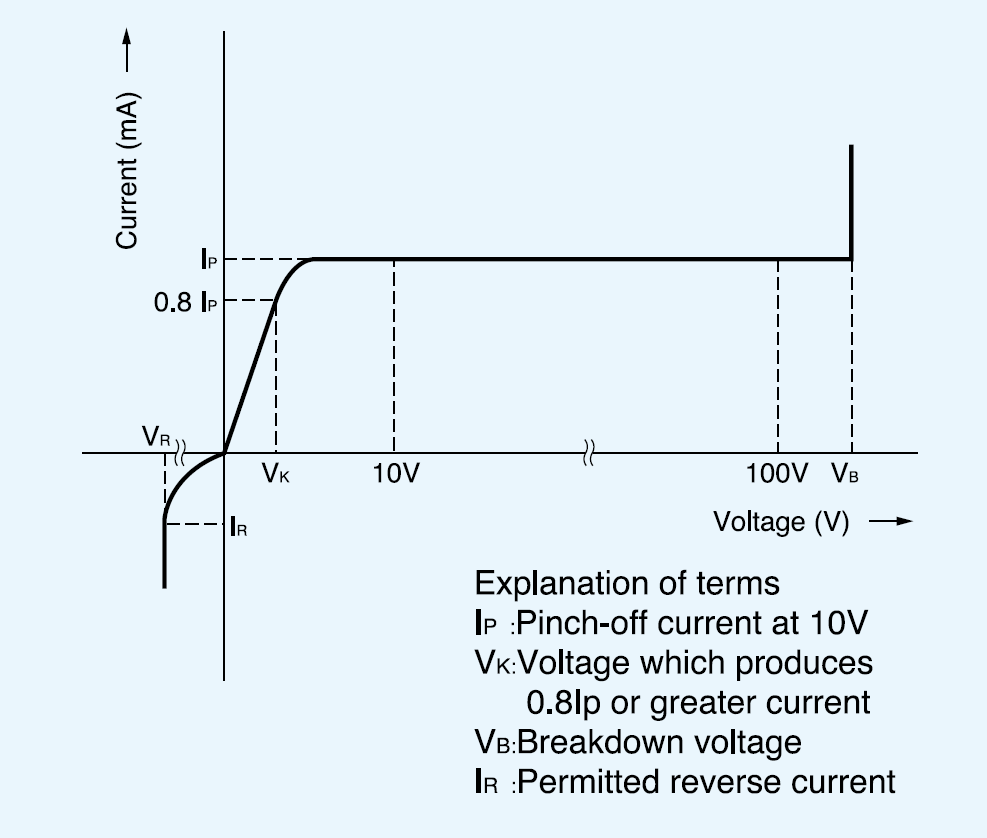
Driver parameters
When selecting such a module we need to consider the following criteria:
- The most obvious selection is the definition of the required input voltage. It has to comply with the power network of the place the LED drvier is used. There are several versions of the drivers that require DC input voltage and provide only DC/DC conversion and current regulation, but the most common types are the ones designed to be connected directly to the 220V power network.
- The output current level, which is in fact the applied forward current of the LED strip, can be a fixed current (most common 350mA, 700mA or 1 50mA) or a variable range from e.g. 100mA to 1000mA.
- Output DC power in order to determine the maximum number of LED modules that can be driven from the driver. As the output current needs to be constant, the power supply has a varied output voltage to pump the required power level to the LED strip. This has a limit, which is defined by the maximum of the output voltage swing.
- Efficiency – although the constant current drivers usually have higher efficiency than the constant voltage drivers, for the economical calculations of the LED lighting solution, this has to be taken in account.
- PFC: The built in power factor correction is a preferred feature of the driver as many devices on the same network can generate high reactive power.
- THD: the total harmonic distortion is also a very important feature of the LED drivers. In asymmetric 3 phase systems, the 3rd harmonics of the voltage could generate remarkable current in the neutral cable. If the switching power supply has high harmonic distortion, the usually thin neutral cable can warm up and danger the surroundings.reason of generation of harmonics are explained on the figure for star topology 3 phase system with neutral cable.
- Dimming: This function is usually integrated inside the power supply. There are several ways to adapt this technically, by using a variable potentiometer (DC voltage control), a PWM signal or digital control (WiFi, IR or DMX or DALI bus)
- Protection: Usually the protection of the LED strip itself is a task of the designer, however the constant current power supply should also be protected. If there is an input protection against the disturbances of the polluted AC power network, the lifetime of the complete lighting fixture will be higher.
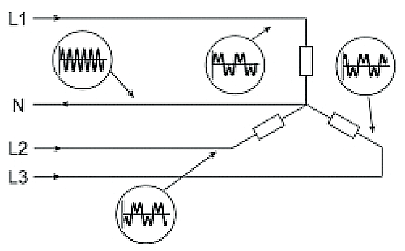
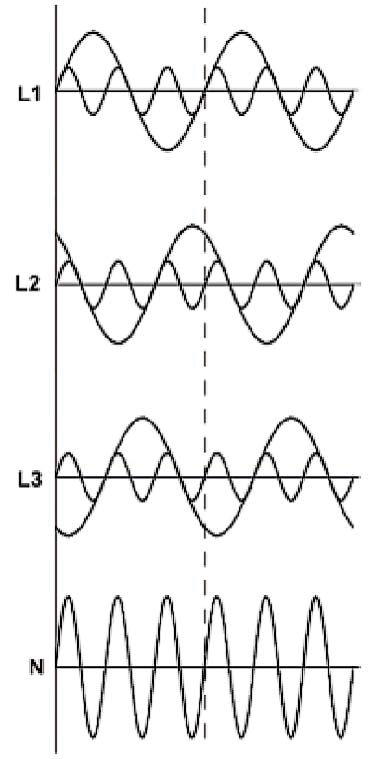
If no input AC protection is applied, we can recommend to use the 2PRO hybrid device of TE Circuit Protection, which is an integrated overcurrent and overvoltage protection solution having a metal oxide varistor (MOV) thermally coupled with a PolySwitch PPTC device. The element provides an excellent combined protection on the AC input lines. When overvoltage caused huge overcurrent arises, the single MOV may burn down by shunting all excess power to ground. In this special configuration the incorporated PolySwitch element would not only protect against thermal runaway, but also protects the MOV from burning. Traditional solutions, like using MOVs with blowing or thermal fuses will never be as exact as the 2PRO solution, which provides resetting function, thermal stability and simpler design, all cost reduction factors. The device is available in 150mA, 350 mA and recently in 750 mA (AC) holdcurrent versions, perfectly fitting most of the available drivers up to 1 60W.
Lumotech drivers
Endrich can offer several LED drivers from a leading European manufacturer, Lumotech.
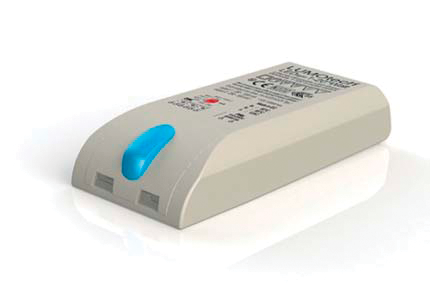
Due to the extended output voltage range of up to 49V, these drivers fit most of the popular COB-LED modules of the market. The L05020-40250 offers a power of 12 W with a selectable output current of 200 or 250 mA, the L05020-40300 can deliver 1 80 mA or 300 mA. An unlimited output current range from 1 50 to 1 200 mA can be found at the L05011 i2 with 20 W. The cost-efficient version L0501 3-40500 with 20 W offers a constant current of 500 mA. This driver is suitable for cost-sensitive applications, which only require one fixed constant current output without dimming. The L0501 6CiD is equipped with a 2- channel-output, which delivers 10 W and 100 to 300 mA at each channel. Therefore this driver is ideal for spot lights using 2 LEDs.
Inventronics drivers
The other LED driver manufacturer represented by Endrich is company Inventronics, which designs and manufactures a broad portfolio of power supplies. It is a leading global supplier of high power LED drivers. Headquartered in Hangzhou, China, the Inventronics team is composed of veteran engineers and executive staff with over 10 years experience in the field. Their strength is to design outdoor drivers, most of the versions are water proof, IP67 protected. Maximum housing temperature is only 42°C at full load and the efficiency of most of the drivers is greater than 90%. There is no current reduction even at maximum ambient temperature of 80°C.
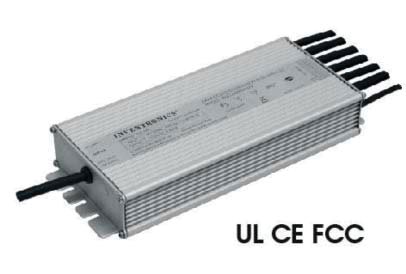
| Share on Facebook | Share on LinkedIn |
References
This article has been published on the following locations:
| # | Media | Link |
|---|---|---|
| 1 | Elektronet 2014/1 | Elektronet : elektronikai informatikai szakfolyóirat, 2014. (23. évf.) 1. sz. 22-24. old. |
| 2 | Elektronet online | Állandó áramú LED-meghajtók |
| 3 | Hungarian version | Állandó áramú LED meghajtók |


